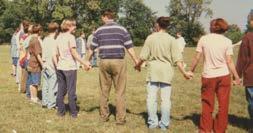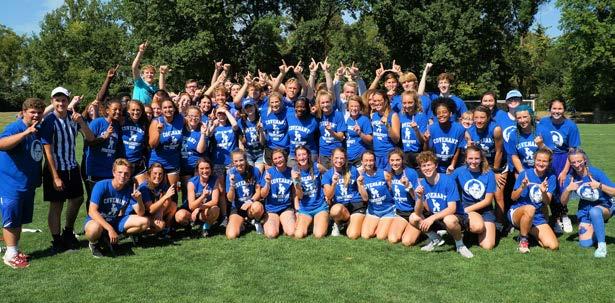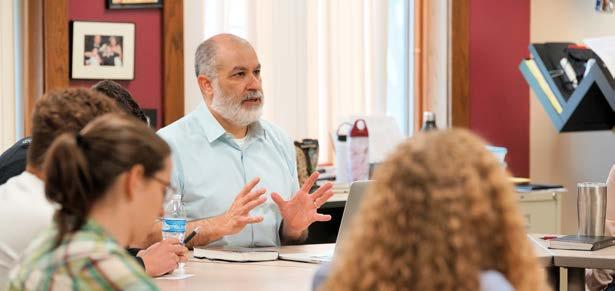
4 minute read
21 ST Century Success
21 st Century Success // HOW STEM STUDIES ARE SHAPING THE FUTURE
Early Covenant leaders sat down to cast a vision for the little start-up school’s mission. As the statement took form, they landed on committing to being a leader in 21st century education. That was pre-2000, and now we find ourselves in the 21 st century. How is Covenant living up to its mission of being on the cutting edge of education? Look no further than the CCHS STEM program.
Advertisement
The acronym STEM stands for Science, Technology, Engineering, and Mathematics, and has become the moniker for studies and jobs in those respective fields. As the 21 st century brought with it the rise and prominence of the Internet, computer science, and adaptive engineering like 3D printers, the famous adage “students are studying for jobs that don’t exist yet” took root in educational institutions. CCHS veteran teacher Sean Bird saw the rise of technology in education and viewed it as an opportunity to give many Covenant students a leading edge in STEM fields.
Bird says that the process of developing a CCHS STEM program has involved a lot of trial and error, student and community investment, and periodic surprise blessings for the programs. Initially, a lot of the work involved students tinkering with complex Rube Goldberg machines, which involves building multi-step, intricate contraptions to complete simple tasks. Bird reflects on those investments as a good start for students, but they weren’t the most practical experiments. The trajectory of the program changed in 2003, when Covenant students were invited by lateSenator Richard Lugar’s office to participate in the centennial celebration of the Wright Brothers’s first flight, and the state-sponsored nature of the competition was another step in opening Covenant to new opportunities for real-world experience in technology and engineering education. “ Students are Perhaps the most on-the-job experience that Covenant studying for jobs students have had through the STEM program is an opportunity to visit NASA’s Johnson and Kennedy Space that don’t exist Centers. Covenant received a grant to build a small rocket that would fly a mile high, and due to their work, a small handful of students and Mr. Bird got an all-expenses-paid trip to visit with NASA experts. Bird said that these early trips to NASA yet. “ were illuminating in very special ways, and that Covenant’s eventual acquisition of its collection of 3D printers can be

traced back to his experience with NASA scientists using the open-source physical object printers. Those printers, one of which was aquired by a library grant, can be frequently heard buzzing in the ‘Maker Space’ of Covenant’s Library Media Center, with students programming them to make physical objects out of plastic polymer filaments. Our Director of Technology, Brad Spencer, can often be seen helping students make their digital creations tangible reality.
Covenant students have also had opportunities to build and program robots to compete in competitions at the local, regional, and national levels. Students spend months building remote controlled robots that perform different tasks each year of competition. Covenant students have built robots to compete in the underwater SeaPerch program as well as VEX Robotics. In recent years, Covenant teams have even competed in the VEX World Championships. Bird emphasized that a large value of the program is that students have the time and space to tinker with the robots they make because it is typically against the rules for him to do the work. He serves an advisory role. Students who are drawn to the STEM activities that CCHS offers are hands-on workers that often find a knack for engineering or tech-based careers by the end of their time at Covenant.
Covenant Alumnus David Colson (‘17) said that his experience in STEM has directly correlated to his engineering education and opportunities beyond high school. “Studying STEM at Covenant, with limited resources we had made us extra frugal, and it also forced us to be more ingenuitive with what we had. I have talked about this with companies, about how in four years at Covenant we worked with $500 to $2000 dollars, which is a tiny budget, and we were going up against and beating public schools with $10k budgets.” Colson said that solving problems of scarcity has trained him for life, not just a career. “We learned to work with what we had and we always had to find a way to make our very finite resources work, so I learned to accept the problems of making something work with limited resources like time, money, personnel, and equipment. Knowing how to work around and through those problems and still make something up to par, something that competes in the market, that is a good thing to show others you know, that lesson is a good thing to apply to life.”
Mr. Bird and his students at the Annual Egg Launch.
SAVE A SEAT
FOR A COVENANT STUDENT
In these uncertain times, be the difference for a Covenant family who may not be able to return this fall without substantial financial assistance.
For more information, contact Perry Hines at 317.437.3355 or advancement@covenantchristian.org.




